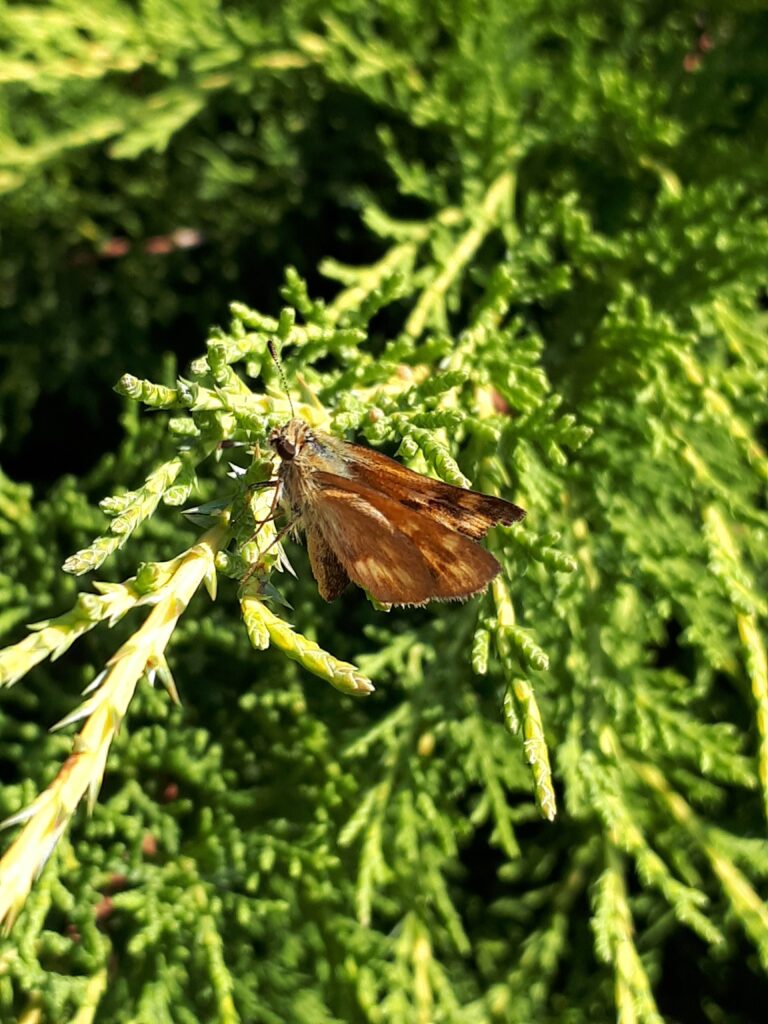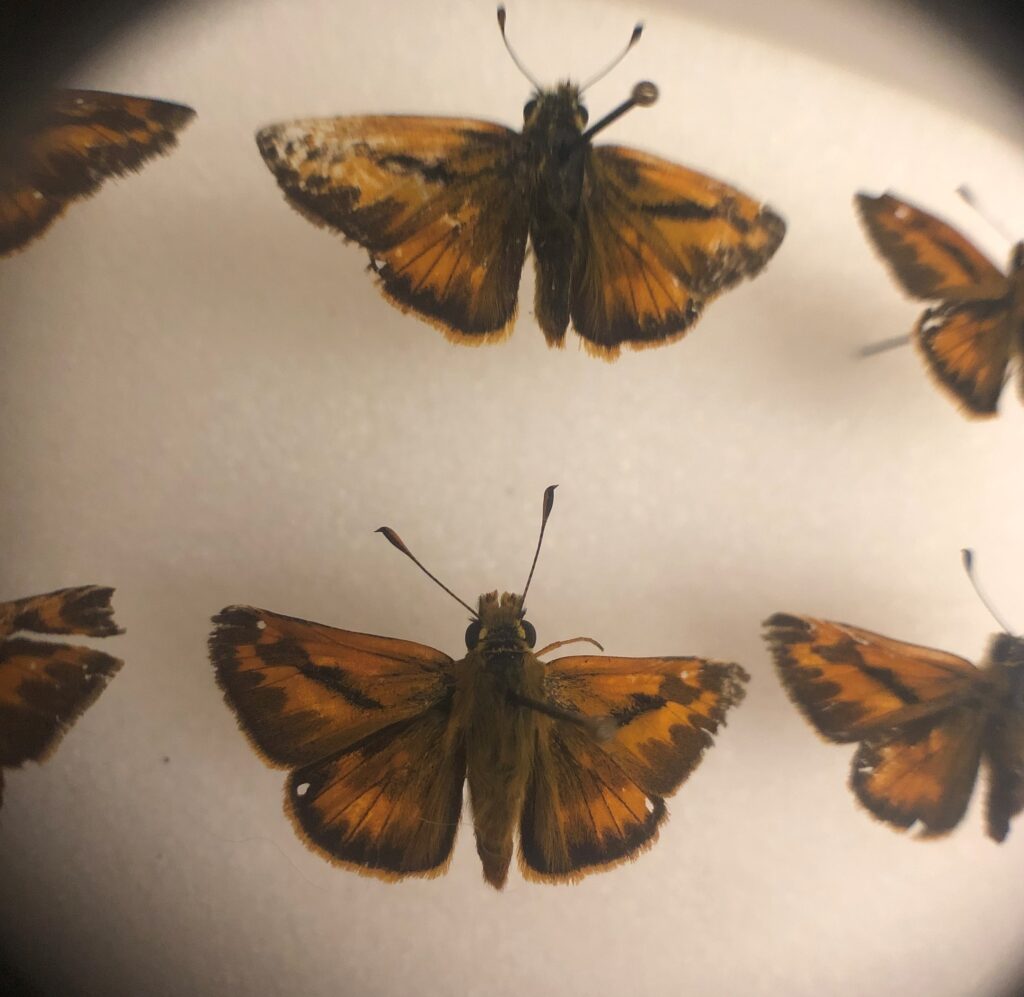Skipper Butterfly (Family Hesperiidae)

More commonly known as skippers, the butterflies in the Hesperiidae family have distinctive characteristics. Often considered to have “moth-like” characteristics, their bodies are hairy and large in proportion to their wings. Most members of the family have a brown or orange colouring. One definitive characteristic to look for is the “recurved” antennae, which looks like it ends in a thick hook. These butterflies get their name from their flying habits; they dart around quickly through the air. This is a diverse group of insects with around 300 species in North America. Like most butterfly species, adults feed on the nectar of flowers, and larvae feed on various plant species.

The Dun Skipper (Euphyes vestris; not pictured) is a species of skipper that is “red listed” in BC, meaning it has been given Endangered species status. To earn this status means that the species is under imminent threat of either extirpation (local extinction) or extinction. These insects have a critical habitat in which they thrive which is being rapidly depleted. They require wet areas associated with either meadows or open forest. The main reasons for the disappearance of these habitats are urban sprawl taking over natural landscapes, human activity on natural landscapes, and the introduction of invasive species. There is hope to help this species to recover, due to their fairly generalist habitat type and the accessibility of sites to be restored. These butterflies need us to be careful and maintain as many native and natural spaces as possible in order to help them flourish in our rapidly changing environment.
For more information, visit E-Fauna BC, BioKids, and the Species at Risk Act (SARA).


